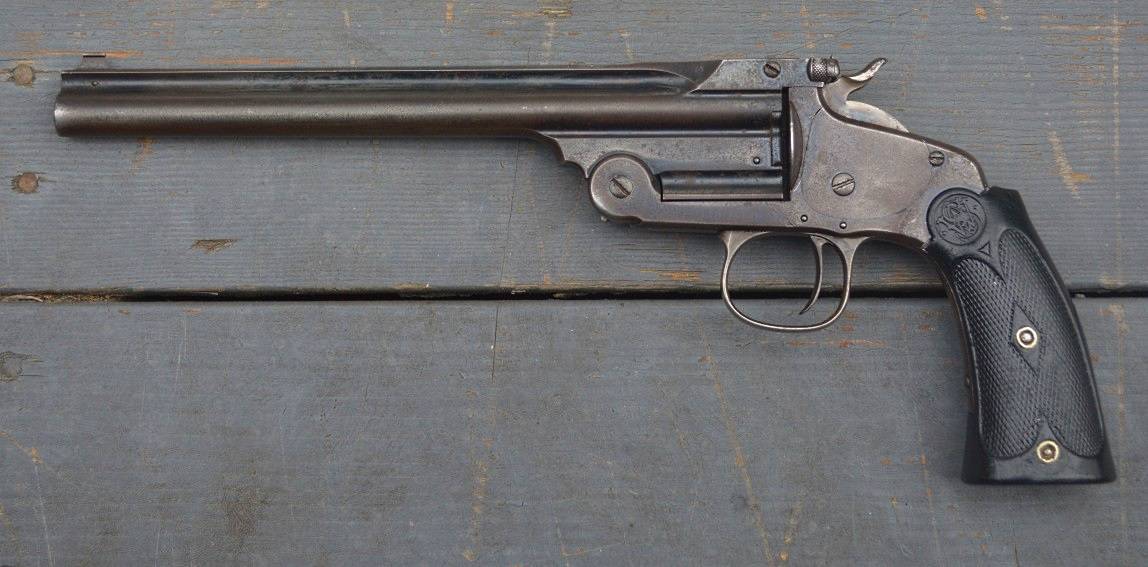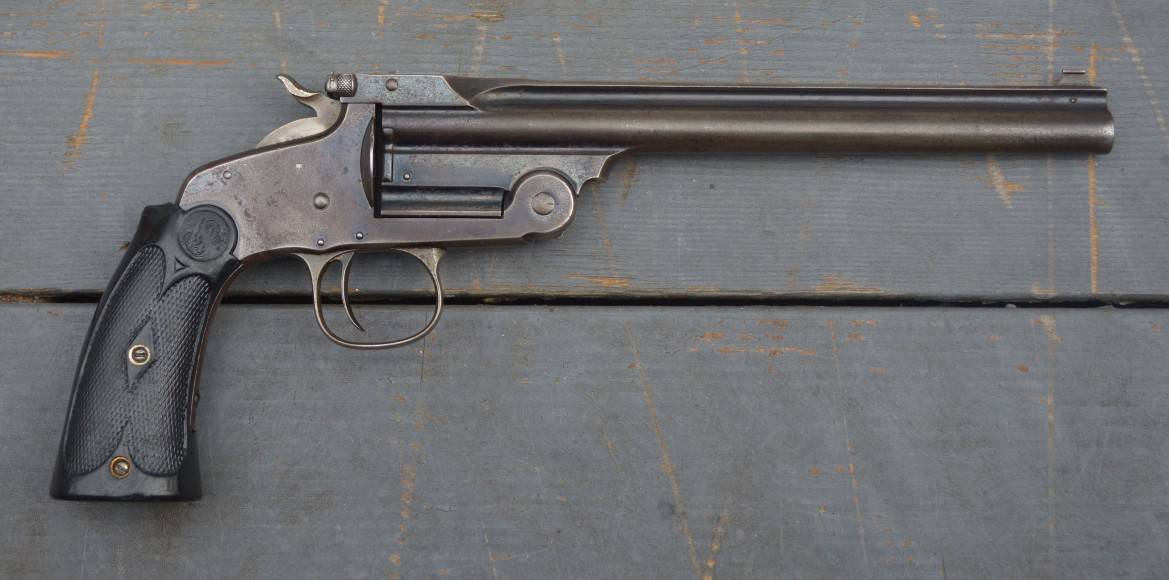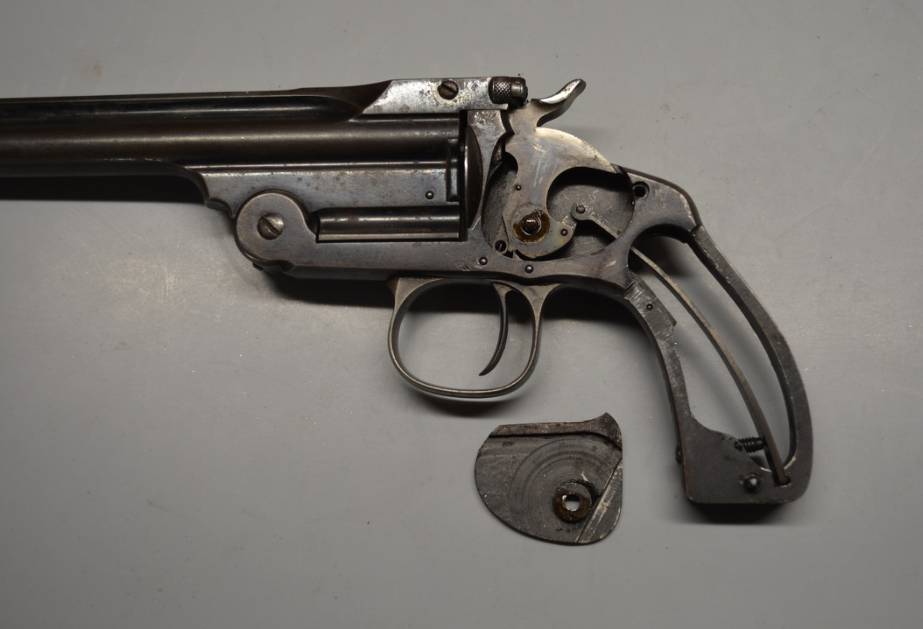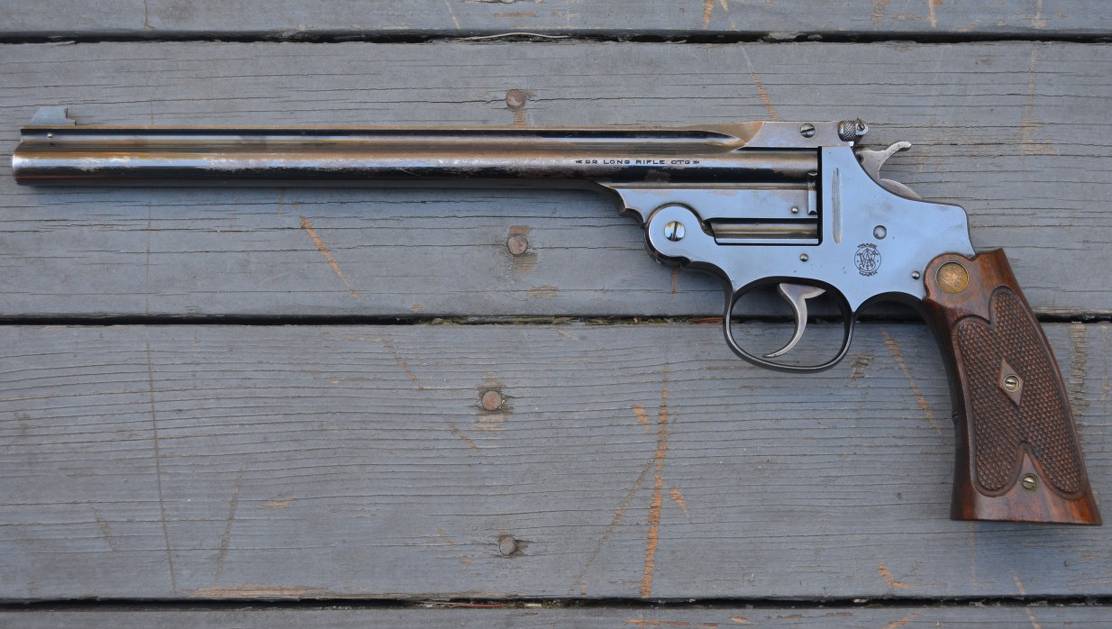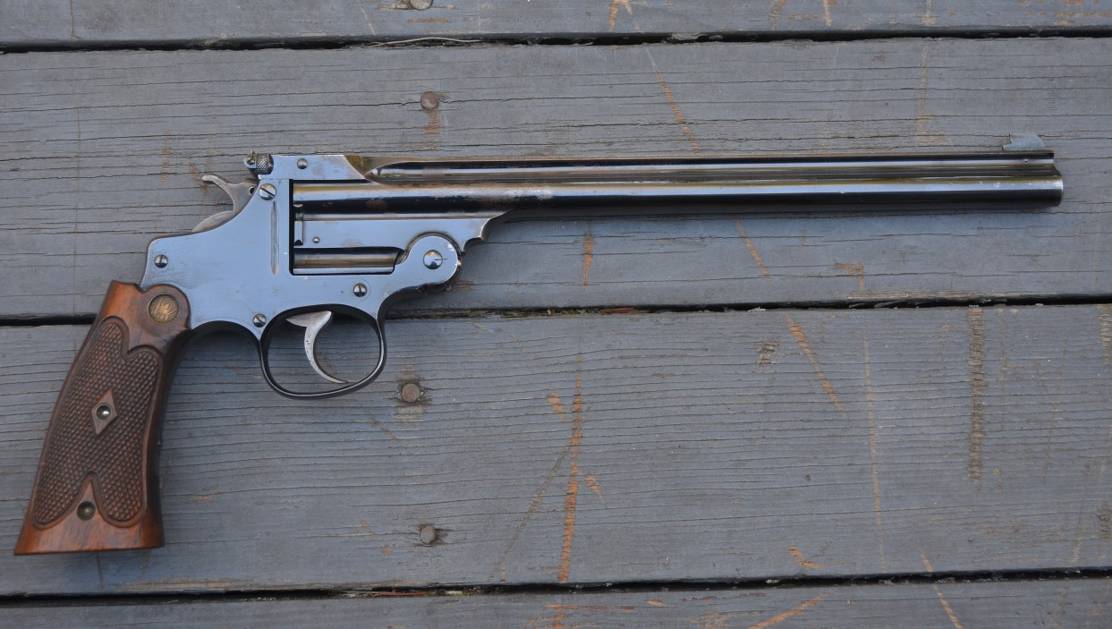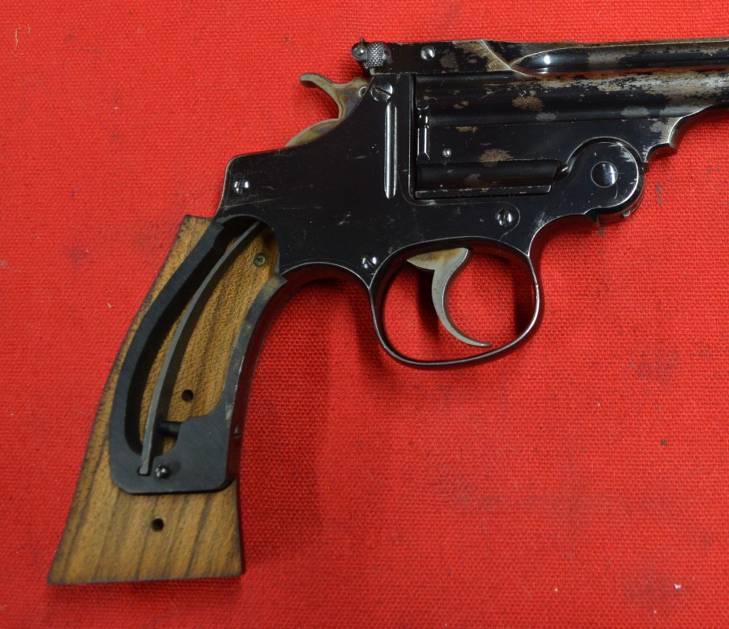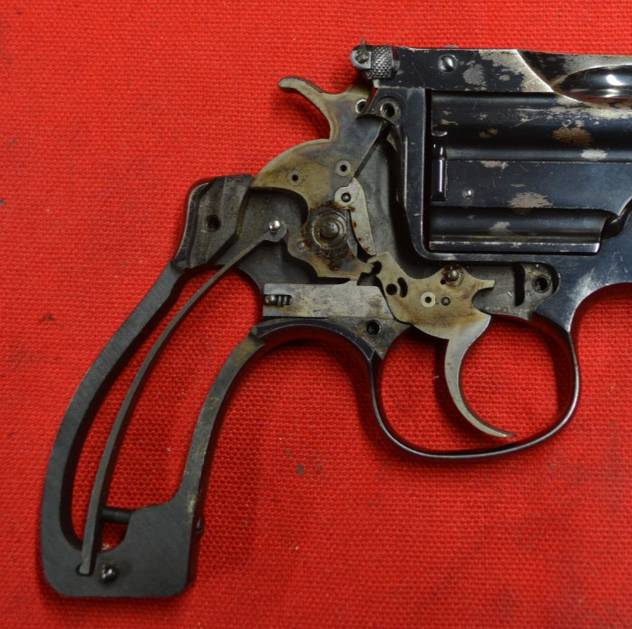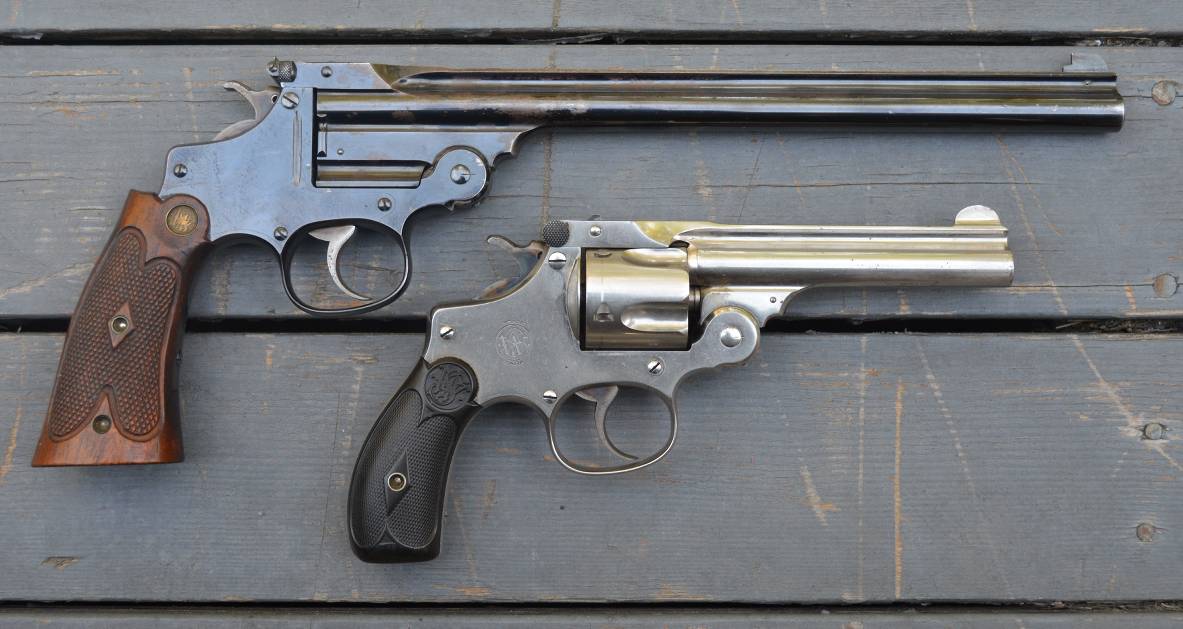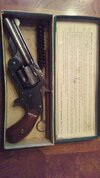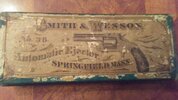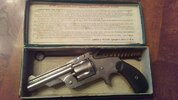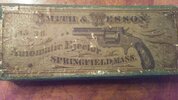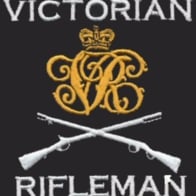Yes, however my understanding is the Third Model was available only in .22 Long Rifle. Not the case with the First Model. Here’s a photograph of a First Model, shipped to England in 1905. The case is London manufactured and would date to the time of arrival in England, circa 1905, supplied by the retailer, Chas Osbourne & Company, Birmingham.Orpington's Single Shot is a Third Model based on the Perfected.
The First Model was on the frame of the 1891 Single Action and retained the recoil shield, hand, and cylinder stop. You could get a combination set with .38 revolver barrel and cylinder and a single shot target barrel, most in .22 but a very few in .32 and .38. Parts are interchangeable, there are "comprised" sets out there that did not ship that way.
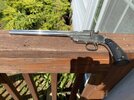
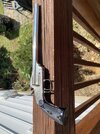
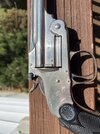
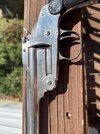
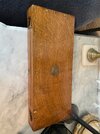
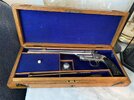
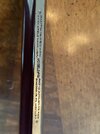
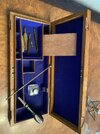
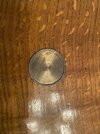
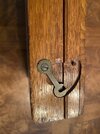
Last edited:


